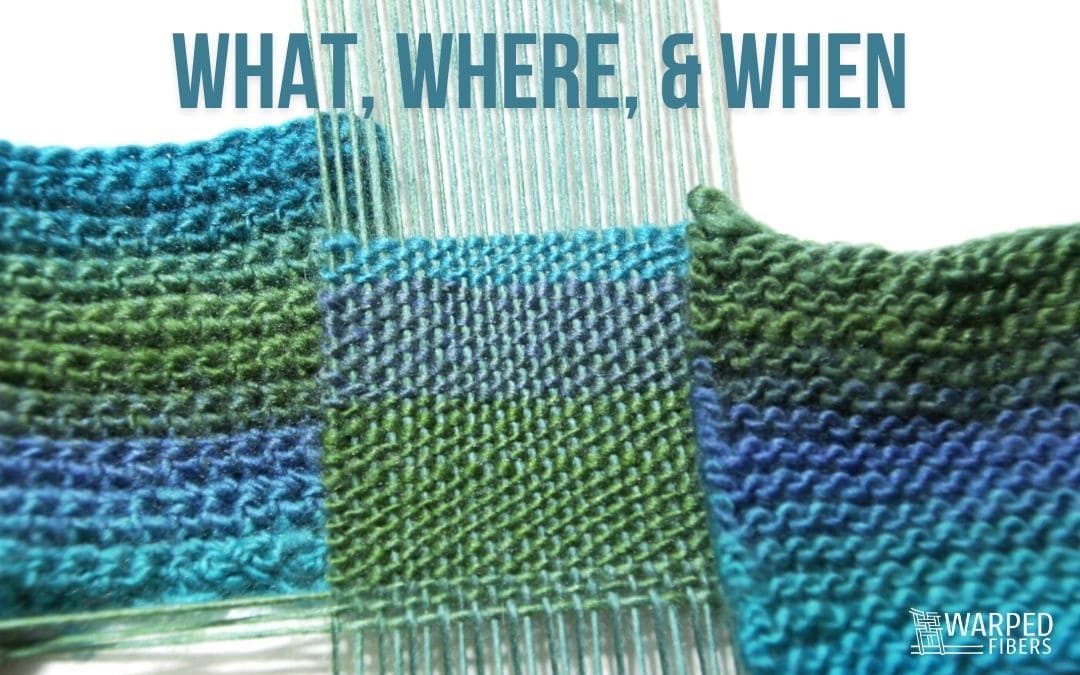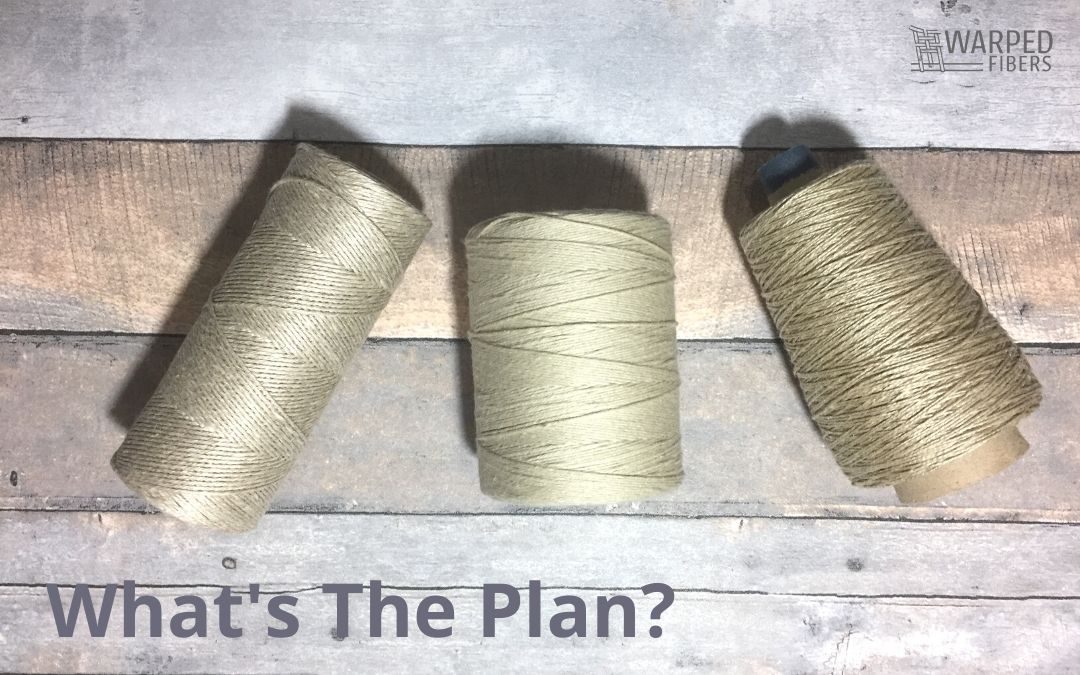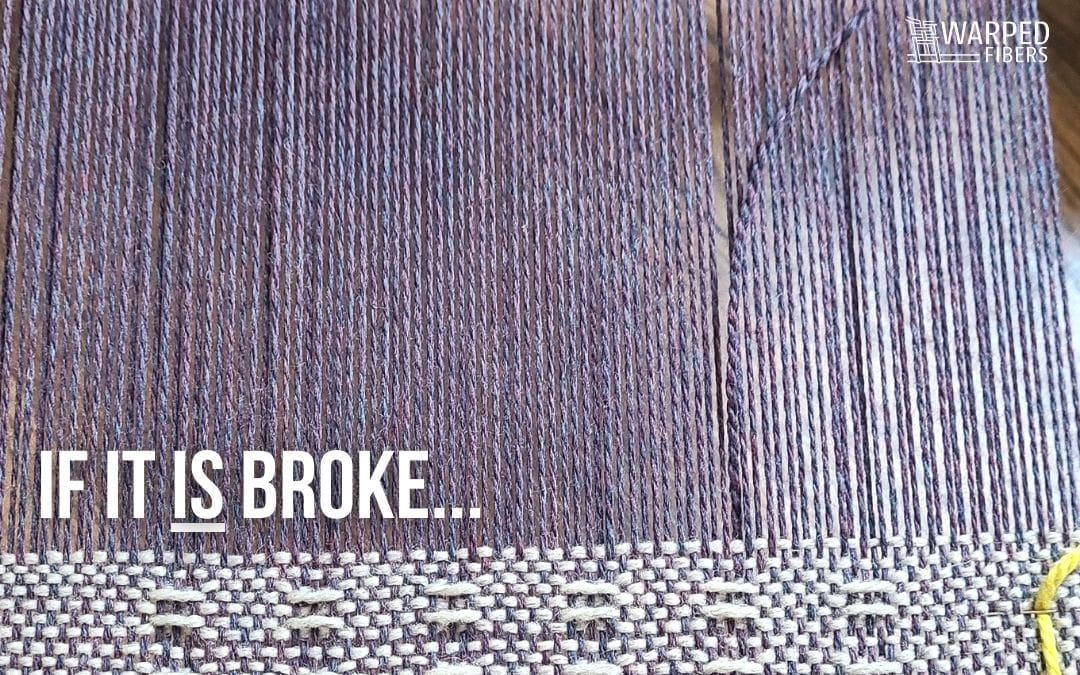Buying a loom can be a really big deal when setting up and furnishing your studio. A loom is not a small purchase so it is understandable to not want to make your purchase half-heartedly.
Once you decide on what general type of loom you want, you then have so many more options to choose from. Just in the floor loom category there are multiple types of floor looms that are all better or worse at certain things. So this is a general post to get you started going in the right direction.
It can be tempting to wait it out for your perfect loom to go on sale or find one in good enough condition that is close to you to buy second-hand. There is nothing wrong with waiting, but if finding your perfect loom is keeping you from starting your weaving journey, then you might consider a different loom to just get you going.
One thing to note though, and this is a rule that I follow in more than just my studio, the loom that gets you started is the perfect loom for you at that time.
Floor Loom Pros
First, let’s briefly talk about what defines a floor loom.
A floor loom is a type of loom with its base on the floor. These looms have foot peddles (treadles) that move the harnesses up and down to create a shed. Floor looms have separate heddles, beaters, and reeds. There are three main kinds of floor looms, but most weavers start on jack-style looms (and that is the kind that I have.)
Usually wider
While some rigid heddle looms come in wide options and some floor looms are narrow, generally speaking, floor looms have a wider weaving area. If you are looking to weave blankets or other wide fabrics then a floor loom might be the best option.
While it is possible to weave your larger fabrics in panels and attach them together if you have a narrow loom, this will be simpler on a floor loom.
Better for tapestry
More heavy duty = better for tapestry.
Due to their heavier nature, floor looms are a better option for weaving tapestry than a rigid heddle loom. (Although, some people would argue that low warp looms* aren’t ideal for tapestry either!)
Tapestries require a high tension warp to allow the weft to flow around the warp instead of deflecting it. Floor looms are a better option for anything requiring a high tension because they are made with heavier materials. Metal and wood with little to no plastic.
That doesn’t mean that you can’t weave tapestry on a rigid heddle loom, but be aware that it may not be as easy to get and keep the tension that your tapestry requires. If a rigid heddle loom is what you have and you want to weave tapestry there is absolutely nothing stopping you from trying!
*Low warp looms are looms that have their warp parallel to the floor. A high warp loom would have the warp upright.
If you are interested in tapestry then you can learn more about it HERE.
Ability to weave more complicated fabric easier
Due to their multiple harnesses, floor looms are made for weaving complicated patterns and fabrics. The more harnesses you have, the more intricate and detailed patterns you can create with less work during the weaving process. An 8-harness floor loom lends itself to incredibly intricate and interesting patterns.
Most of the work for weaving on a floor loom is done upfront during the warping process. Then it is just a matter of following a pattern. (This is a generalization, as pick-up patterns and double-weave can be a bit more complicated than that.)
Think about it just like my post on choosing your simple frame loom warping method:
Do you want to do harder work now or later?
Longer weavings
The size and height of the floor loom lends itself to be able to hold longer warps than you would on a rigid heddle loom. Purely because the warp beam is further from the ground, it allows you to be able to wrap more warp around it. Depending on the rigid heddle loom you choose, you may be able to get more or less warp on it.
Some floor looms come with the option for a warp separator on the back warp beam. This allows for an even longer warp to be put on and makes floor looms ideal for making yardage.
If you are interested in learning how to get the most out of your warp by planning multiple projects then check out THIS post.
Cons
Takes longer to warp
Ask any weaver that has ever warped a floor loom and they will probably tell you just how long it can take to go from cone to loom. Having a floor loom requires you to either have a warping board or warping mill to first measure out the length and number of warp ends required for your weaving. (so you also have to buy one of these warping tools.)
After measuring out all of your warp yarns you then have to transfer it to your loom.
Your warp then has to go through your reed, then the correct heddle in the correct harness, get tied onto your back apron, pulled through, then tied onto your front apron, and tensioned. (If you are warping front to back)
Especially considering you will probably be weaving larger pieces on a floor loom due to the weaving width available, this whole process can take awhile. With floor looms, there are no direct warping options to make it go faster.
Takes up a lot of space
With the exception of some folding floor looms that are smaller (and even these will take up more room than a rigid heddle loom) floor looms are meant to be a permanent feature in your studio. Once you find your place for your loom you probably won’t be moving around much as they tend to be heavy. This means that you will need to have a dedicated space for your floor loom. This may even be the biggest factor in choosing the type of loom you decide on.
The smaller folding looms are still not really meant to be portable (although sometimes they are used for traveling workshops) as they wouldn’t be something you would bring on vacation or in your RV. Instead they would take up most of the room in the back of your vehicle and not leave room for much else.
More expensive
With more parts, usually heavier materials, and the fact that they are larger – floor looms are more expensive than rigid heddle looms.
Again, this will depend on the type, size, and features that it has. While completely worth the price that you have to pay for them, the price is definitely a consideration. A new floor loom will typically cost you somewhere in the thousands. There is no doubt that this is a big investment in your future as a weaver.
Unless you absolutely want a new loom or you are looking for something very specific it may be a good idea to look for a used loom to save some money. You may have to wait a while, but you might just find one that will work for you.
Rigid Heddle Loom Pros
Unlike floor looms, rigid heddle looms are meant to be propped on a table or used with a dedicated stand that will sit on the floor. They have a multipurpose heddle/ beater/ reed that does it all. The weaver creates a shed manually by raising or lowering the heddle into a slot and requires no foot movement.
Lightweight
Weights will vary depending on the size and type of rigid heddle loom you choose, but they are much lighter than floor looms.
Rigid heddle looms are meant for weavings that require less tension than floor looms. This makes it possible for the materials used to be lighter weight (wood or plastic gears instead of metal.) There is also a lot less to them when it comes to overall materials with no extra harnesses for the heddles, mechanics to move the heddle up and down, and no attached stand.
Portable
The size and weight of these looms make them great for traveling. Some looms like the Schacht flip folding rigid heddle loom even fold in half for easier travel. (Full review of the Schacht Flip Rigid Heddle Loom HERE) The best part about that is that they can keep their working warp on them while folded!
These looms are great for bringing in your RV, on a road trip, or to your in-law’s house. They are also good for moving around your house if you don’t have a dedicated studio or you are just looking for a different view.
Unlike the “portable” floor looms that can be used for workshops these are actually pretty portable. Even the rigid heddle looms that don’t fold will take up a lot less space then any floor loom would.
Less expensive
Rigid heddle looms are a more beginner-friendly option if you are looking to not invest a lot from the beginning. They are usually around a few hundred dollars with the less expensive ones being around $150 or so.
Just because they are less expensive and beginner friendly doesn’t mean they are less than, just that there is less to them!
Easier to warp (direct warping)
One of the best things about rigid heddle looms is the ability to direct warp them through the use of a warping peg (your loom may come with one!)
This cuts out the need for a warping board or warping mill. Especially if you only have one heddle, they are also easier to warp because you are not dealing with multiple harnesses and shaft patterns. Warping a rigid heddle loom can be a lot simpler and faster than warping a floor loom because you are completely cutting out multiple steps!
Cons
Not ideal for tapestry or rugs
As I already stated above in the pros for floor looms, rigid heddle looms aren’t really made for tapestry due to them not being able to hold the same amount of tension. Rugs also need the ability to beat your weft really hard and tight, this can be difficult on a rigid heddle loom.
Neither of these things are impossible! It’s just not what they are made for, so you may have to work around some of the rigid heddle downfalls if you want to use it this way.
Can’t weave complicated patterns (or harder to do so)
It is possible to weave things like overshot and double weave on a rigid heddle loom, but you will need tools like extra heddles, pick-up sticks, or corded heddles. These things are all doable, but not as simple as weaving these patterns on a floor loom where you just need to step on a treadle to raise the right shed.
Also, not all rigid heddles looms have a spot for more than one heddle. This means you may have to purchase an extra kit or add one on with your own smarts and elbow grease.
Which is right for you?
Space
Do you have dedicated space for a loom? If so, how much? Smaller floor looms do exist, but so do stands for a rigid heddle loom if you want something that seems more permanent.
The ability to take your loom with you might also be of great concern. If you don’t want to leave your loom behind and you want to weave long projects then buying a rigid heddle loom can be both your studio loom and your travel loom.
Money
With floor looms costing more than rigid heddle looms it is usually easier to start out with a rigid heddle. It makes sense to not invest the money on a large piece of equipment when you are first starting. (Frame looms are also an option!)
That being said, rigid heddle looms are fantastic looms and not just for those who can’t afford a floor loom. Take all of the other factors into consideration and if you still think that a floor loom is right for you but you are worried about the price then try to find a used one or take a class at your local arts center that teaches weaving. Try it out, then decide.
Types of projects
While both types of looms will allow you to weave many different types of projects, some of these projects will be simpler on a floor loom. If you are looking to weave tapestry or wanting to weave heavy duty rugs then a floor loom would generally be the best choice.
If you are just wanting to weave simpler scarves, towels, or don’t mind a little more work while weaving patterns then a rigid heddle loom would be a great option.
I recommend Inventive Weaving on a Little Loom by Syne Mitchell if you are just starting out on your rigid heddle journey. It’s a fantastic book for beginners and those looking to expand on their rigid heddle knowledge. (full review coming soon!) If you are just starting out on your floor loom journey then I recommend Learning to Weave by Deborah Chandler (full review HERE.)
What do you weave on? Let me know in the comments what you chose and why!
Shop This Post!
This page may contain affiliate links. If you purchase something through these links then I will receive a small commission – at no extra cost to you! Please read our DISCLAIMER for more info. Thanks for the support!
⇣ Love It? Share It! ⇣
You May Also Like

























